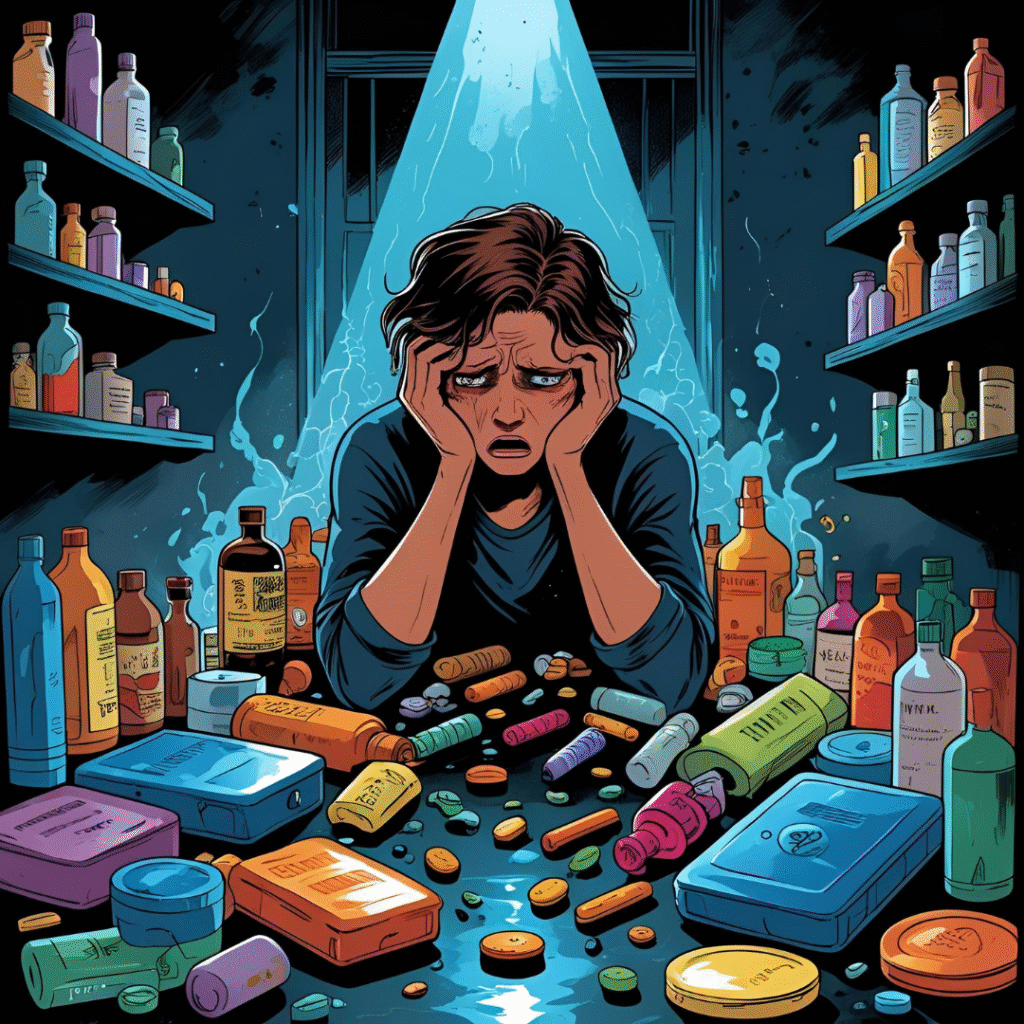Immediate Overview
The DSM‑5, published by the American Psychiatric Association, defines Substance Use Disorder (SUD) as a single continuum combining abuse and dependence. Diagnosis requires at least 2 of 11 criteria within 12 months, classifying severity as mild, moderate, or severe. This unified, dimensional model offers improved clinical clarity and predictive power. Psychiatry+11MentalHealth.com+11PMC+11PMCWikipedia+4Continuum Outpatient Center+4Wikipedia+4NCBI+1Wikipedia+1
What Is a Substance Use Disorder (SUD)?
SUD encompasses maladaptive patterns of substance use causing significant impairment or distress. It replaces the outdated DSM‑IV categories of abuse vs. dependence, focusing instead on severity and functional impact. SUD includes disorders for ten major drug classes—alcohol, opioids, cannabis, stimulants, tobacco, etc.—all assessed using the same criteria.
11 DSM‑5 Diagnostic Criteria
A diagnosis is made when ≥2 of the following criteria occur within 12 months:
- Larger amounts/longer duration than intended
- Persistent desire or unsuccessful efforts to cut down
- Excessive time spent obtaining, using, or recovering
- Craving or strong urge
- Failure to fulfill obligations (work, school, home)
- Continued use despite social/interpersonal problems
- Giving up important activities
- Use in physically hazardous situations
- Continuing use despite physical/psychological issues
- Tolerance (needing more for same effect)
- Withdrawal, relieved by more use
Severity Levels
- Mild: 2–3 criteria
- Moderate: 4–5 criteria
- Severe: 6+ criteria Psychiatry+11PMC+11publichealth.lacounty.gov+11Public Safety Medicine
Specifiers & Remission
DSM‑5 includes:
- Early remission: No criteria (except craving) for 3–12 months
- Sustained remission: None for ≥12 months
- Additional specifiers: “On maintenance therapy” or “In a controlled environment” PMC+15Public Safety Medicine+15Psychiatry+15
Key Updates Since DSM‑IV
- Integrated abuse & dependence into one diagnosis—addresses diagnostic gaps and improves reliability. webcampus.med.drexel.edu+2NCBI+2Continuum Outpatient Center+2
- Removed “legal problems” criterion—low clinical utility. Psychiatry+5NCBI+5MentalHealth.com+5
- Added “craving”—reflects current neuroscience of addiction. Public Safety Medicine+5NCBI+5Wikipedia+5
- Eliminated polysubstance disorder—each substance is specified independently. Wikipedia+1Wikipedia+1
- Aligned with ICD‑11 structure—shared severity specifiers and remission statuses.
These changes sharpen diagnostic precision and help tailor treatment plans.
Clinical Use & Screening Tools
Diagnosis combines DSM‑5 criteria with:
- Clinical interviews & medical history
- Screening tools: TAPS, DAST‑10, AUDIT, CAGE, CRAFFT (adolescents) McStap+6MentalHealth.com+6Wikipedia+6
- Lab tests, confirming current use—but clinical criteria determine SUD diagnosis.
Why This Matters
- Treatment optimization: Severity and remission specifiers guide therapy intensity (e.g., MAT, counseling, residential programs)
- Early detection: ≥2 criteria allows earlier intervention vs. DSM‑IV
- Research & policy alignment: DSM‑5’s structure aligns with ICD‑11 and informs epidemiology
- Reducing stigma: Viewing SUD as a medical continuum supports understanding and access to care
Conclusion
DSM‑5’s SUD criteria offer a more nuanced, unified approach—balancing clinical precision with actionable severity scales. Updates like craving, removal of legal issues, and standardized remission markers reflect evolving knowledge about addiction. Understanding and applying these criteria advances effective treatment, reduces stigma, and supports lasting recovery.













